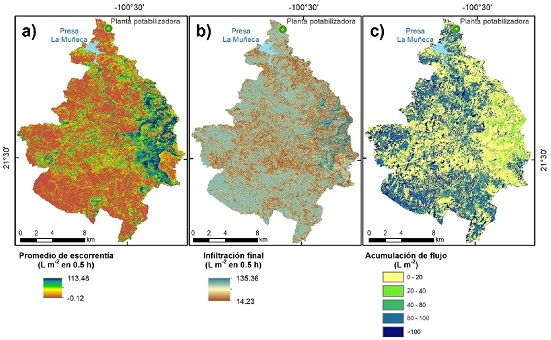Ecohydrological catchment functioning with secondary transfer works
DOI:
https://doi.org/10.28940/terra.v41i0.1678Keywords:
inter-patches, rainfall simulations, run-of f accumulation, patchesAbstract
Moving water from one catchment to the other implies hydraulic works, such as water transfers, which together with the associated infrastructure have af fected environmental and social factors, among others. Thus, the present study evaluates the ef fects of water transfers on structure and ecohydrological functioning in La Muñeca catchment, located in the Municipality of Tierra Nueva, San Luis Potosí. Landscape structure characteristics were measured by 50 m landscape function analysis (LFA); the transects are oriented downslope, where patches with dense, intermediate, and low land cover (inter-patches) were identified. A land cover map was generated using a regression model. Average run-of f and final infiltration rates were determined from rainfall simulations in patches and inter-patches and mapped to model the spatial distribution of run-of f accumulation. The regression model used to map ground cover was significant (P < 0.0001). High run-of f was generated towards the western part of the catchment as ground cover was low. In contrast, the eastern part of the study area had the highest accumulation of run-of f and sediment because of a higher proportion of dense cover patches. The results show the feasibility of using landscape metrics, rainfall simulations, and spatial modeling to evaluate ecohydrological functioning and thus determine run-of f accumulation at various landscape scales.
Downloads
Publication Facts
Reviewer profiles N/A
Author statements
- Academic society
- Terra Latinoamericana
- Publisher
- Mexican Society of Soil Science, C.A.

















